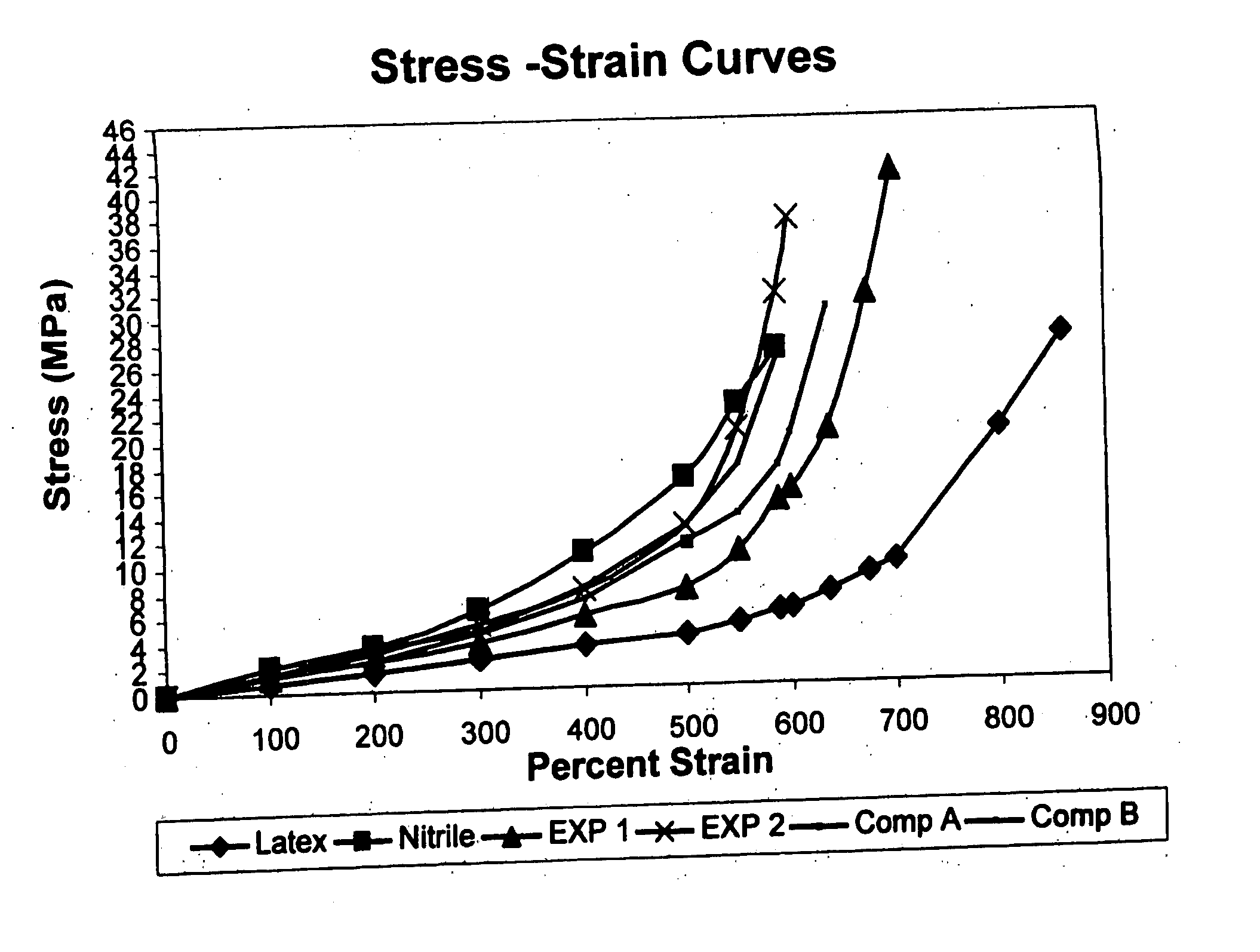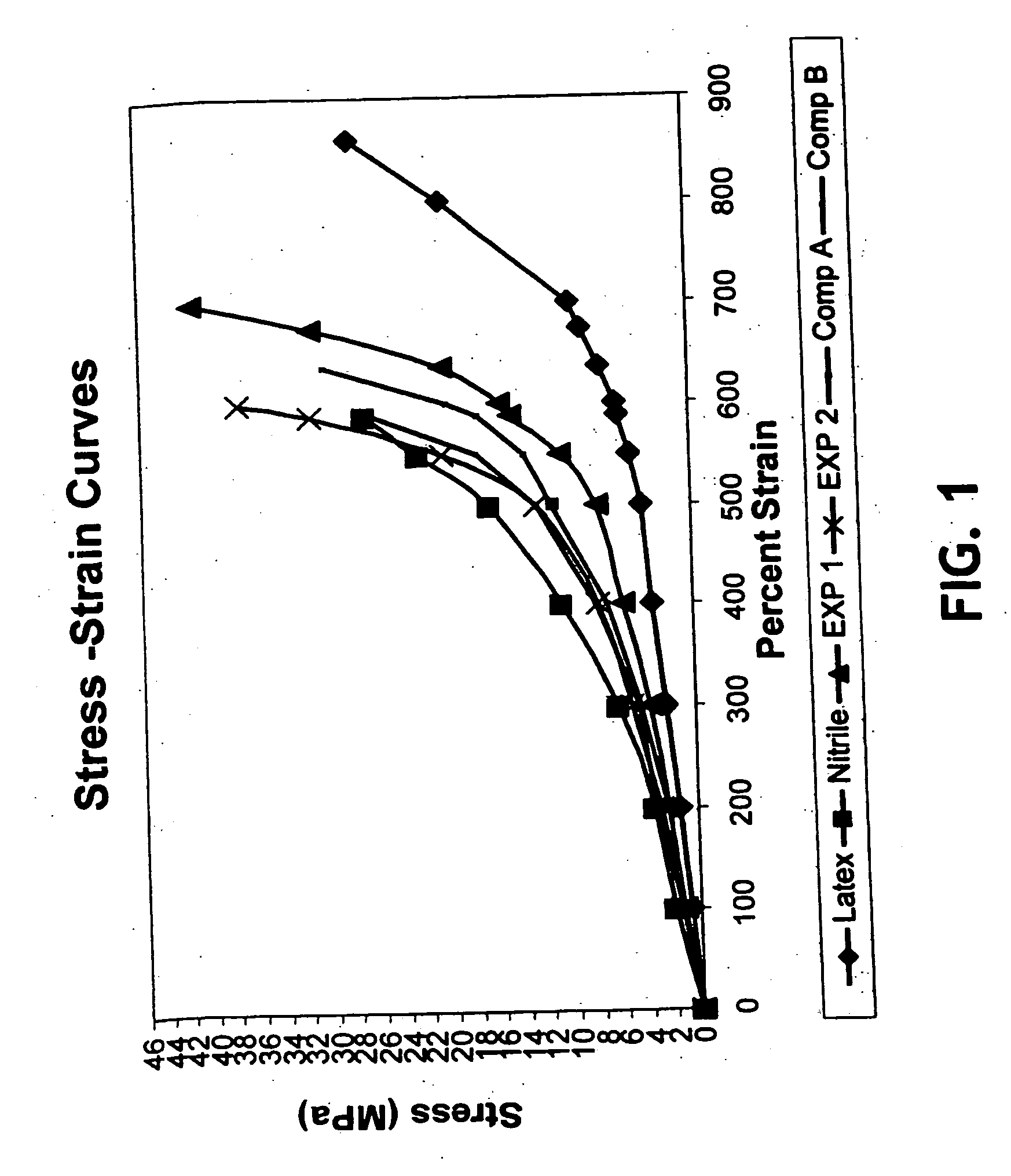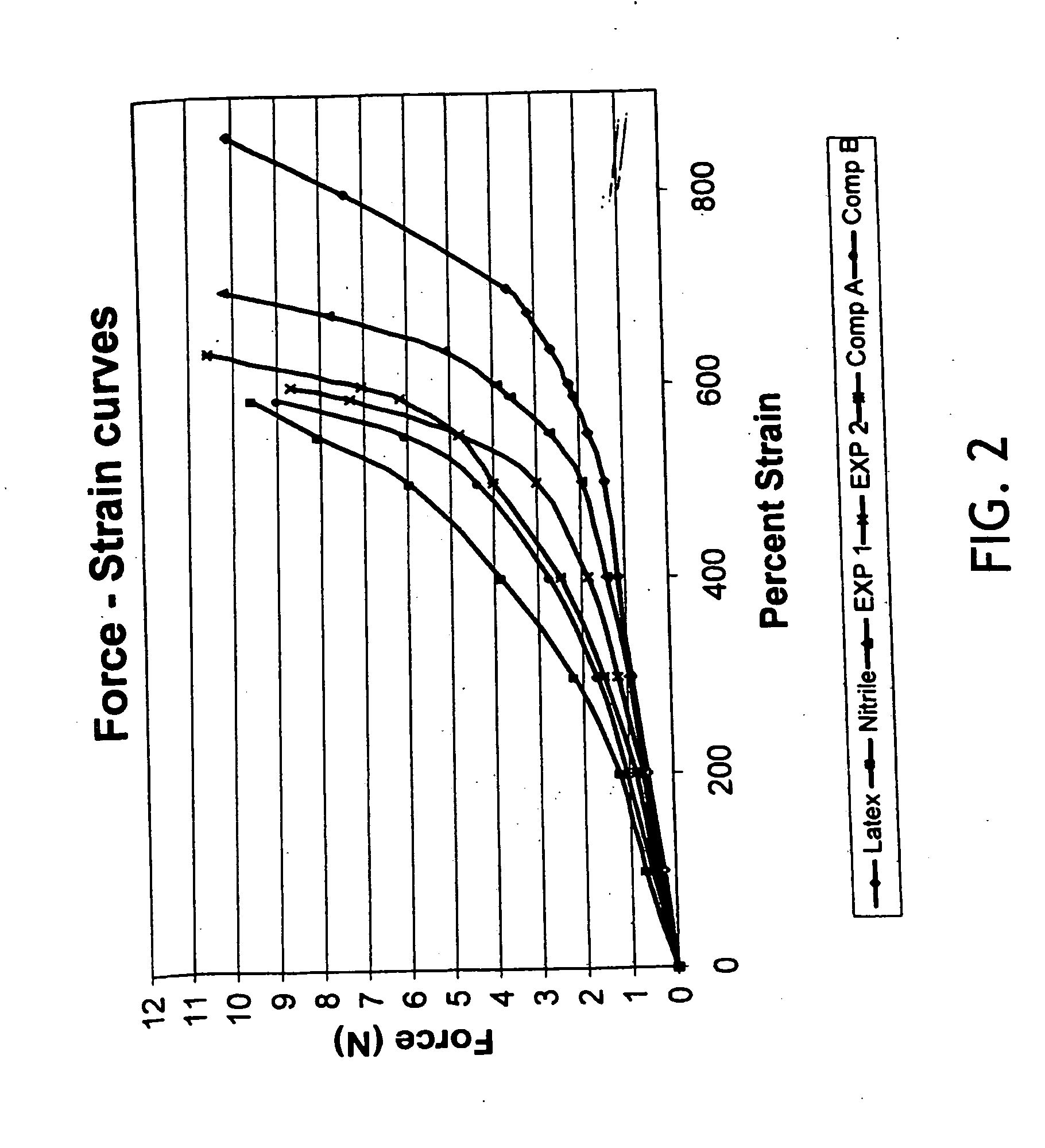Exterior-coated nitrile rubber article having natural rubber characteristics
a nitrile rubber and exterior coating technology, applied in the field of elastomeric articles, can solve the problems of reducing the quality of the gelation process, and achieve the effects of maximizing the strength potential of nitrile rubber, minimizing the force needed, and maximizing the strength of material strength
- Summary
- Abstract
- Description
- Claims
- Application Information
AI Technical Summary
Benefits of technology
Problems solved by technology
Method used
Image
Examples
Embodiment Construction
[0023] The present invention describes the creation of elastic articles, such as gloves, made from a nitrile polymer formulation that exhibit physical characteristics similar to those of comparable natural rubber latex articles. A desirable attribute for elastomeric articles that are worn on the body is softness or pliability of the polymeric material. The invention describes the use of nitrile-based rubber formulations for manufacturing articles that have good physical strength and chemical resistance while also being softer (i.e., having a lower elastic modulus) than many previous nitrile rubber compositions. As used herein, the terms “elastic” or “elastomeric’ generally refer to a material that, upon application of a force, is stretchable to an extended, biased length. Upon release of the stretching, biasing force, the material will substantially recover to near net shape or original dimensions; alternatively at least about 50% of the distorted or extended dimensions. As used her...
PUM
| Property | Measurement | Unit |
|---|---|---|
| Length | aaaaa | aaaaa |
| Fraction | aaaaa | aaaaa |
| Fraction | aaaaa | aaaaa |
Abstract
Description
Claims
Application Information
 Login to View More
Login to View More - R&D
- Intellectual Property
- Life Sciences
- Materials
- Tech Scout
- Unparalleled Data Quality
- Higher Quality Content
- 60% Fewer Hallucinations
Browse by: Latest US Patents, China's latest patents, Technical Efficacy Thesaurus, Application Domain, Technology Topic, Popular Technical Reports.
© 2025 PatSnap. All rights reserved.Legal|Privacy policy|Modern Slavery Act Transparency Statement|Sitemap|About US| Contact US: help@patsnap.com



